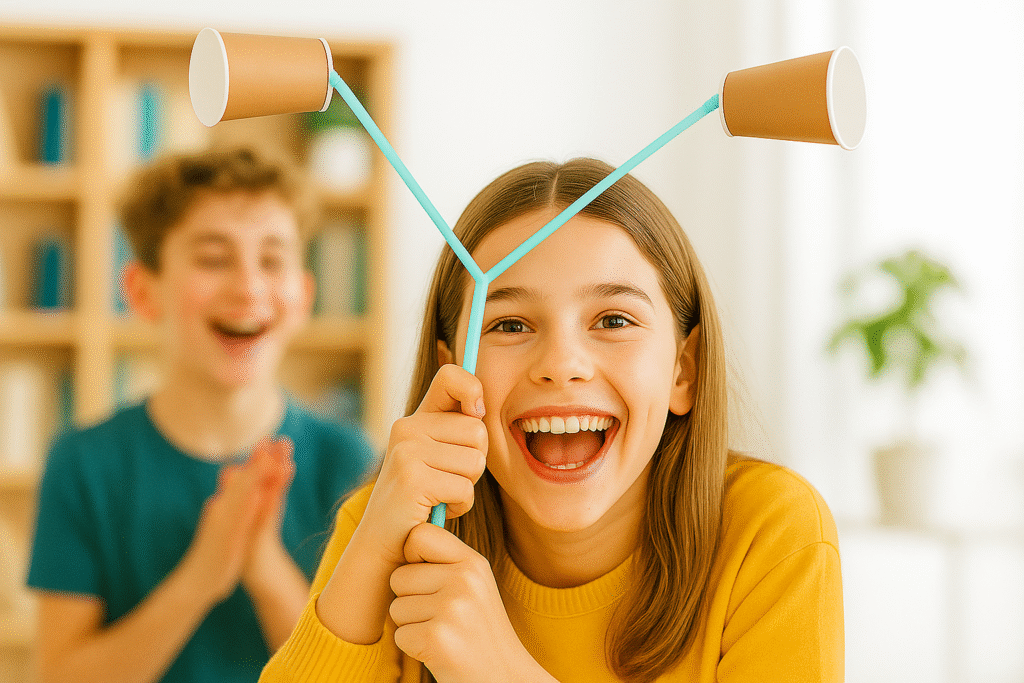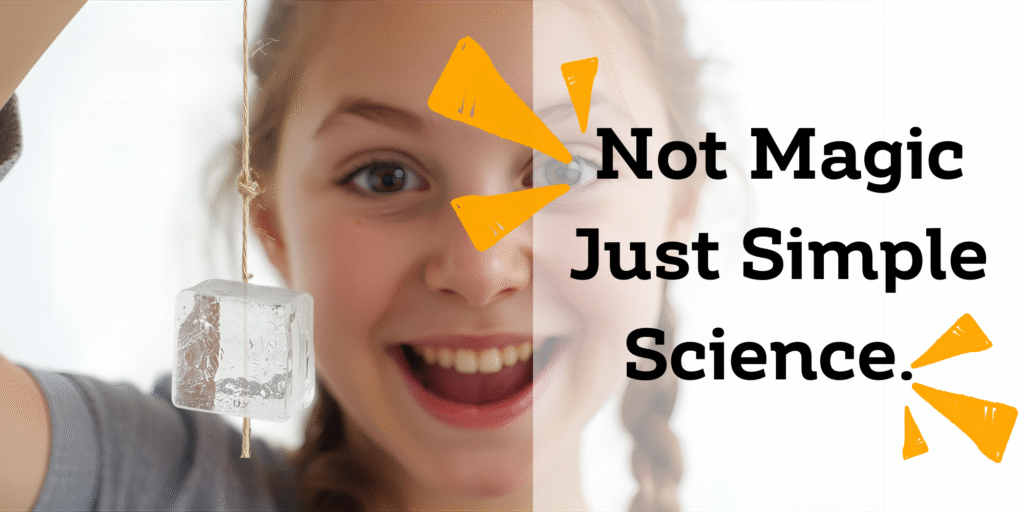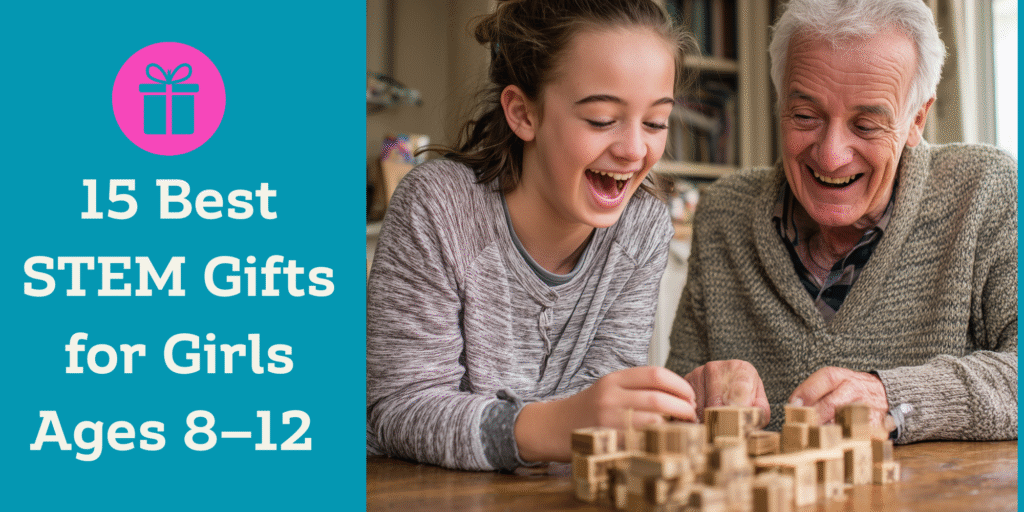Build Your Own Sound Scanner – A DIY Ear Extender for Tracking Sounds!
Ever wondered how your ears figure out where a sound is coming from—like footsteps behind a door, a whisper in the hallway, or rustling leaves outside? Here’s a fun experiment you can do at home that turns your child into a sound detective. All you need are cups, straws, tape… and curiosity.
With Phase One, you’ll build a basic directional listening device using simple materials. Then in Phase Two, you upgrade it into a “spy ear” and turn it into a game. This is part engineering, part physics, totally hands‑on—and you’ll be reinforcing how our ears help us locate sound in space.
What You’ll Need (Phase One)
- 2 disposable cups (paper or plastic; paper tends to let sound transmit more cleanly)
- 1 wide rigid straw (e.g. a smoothie or milkshake straw)
- 2 thin bendy straws (like from a juice box)
- Tape (masking tape or duct tape works well)
- Optional: playdough, modeling clay, or chewing gum (to help seal joints and prevent sound leaks)
How to Build the Sound Scanner
- Poke a hole in the bottom of each cup—just large enough so the bendy end of the thin straw fits through.
- Insert the bendy ends of those straws into each cup and tape securely. Make sure you don’t block the straw openings.
- Connect the straight ends of both bendy straws into one end of the wide rigid straw, creating a Y‑shape. Seal the joint tightly with tape (and optional clay or gum) so air can move through without leaks.
- Hold the wide straw’s open end to your ear and point the cups outward like listening dishes. You’ve just built your own “spy ears.”
What It Teaches
This tool models binaural hearing—how having two “collectors” of sound (our ears) lets the brain compare information and locate where sounds come from. Each cup funnels sound from a different direction, and the Y‑connector passes that into your ear. As you turn, sounds will seem louder or quieter depending on where the source is.
It’s a low tech, high discovery way to see how animals (and spies!) use directionality to listen and find hidden sources of sound. Studies of auditory processing show that humans—and many animals—rely heavily on these differences in timing and loudness across ears to judge sound source (Harvard Health: adolescent auditory localization research).
Upgrade: Add the Focus Cup (Phase Two)
Want more sensitivity? Add a third cup for passive amplification—like a reverse megaphone that helps gather more sound.
- Grab 1 extra cup.
- Cut a small hole in its bottom.
- Insert the bottom end of the wide straw into this hole and tape it firmly so there’s no leakage.
- Now listen through the open mouth of this third cup (instead of holding the straw to your ear).
- Test with soft sounds (whispering, tapping) and compare:
- With the Focus Cup
- Without the Focus Cup
- No device at all
- Notice how sound becomes a bit more focused or “gathered” through the upgraded tool—similar to how cupping your hand behind your ear works.
Game On: The Sonic Scavenger Hunt
Turn your experiment into a mission:
- Have your child block one ear with a soft earplug or cotton ball.
- Give them the upgraded Sound Scanner and explain: “You’re a sound detective now.”
- A parent or sibling hides a quiet phone ringtone or timer in the room (or somewhere else) while your child waits with their tool.
- When the sound goes off, your child must use only the Sound Scanner and their one listening ear to track down where it came from.
The Learning Behind the Play
- Binaural hearing: Two ears perceive sound at slightly different times/loudness—your brain uses those differences to locate sound sources.
- Passive amplification: The third cup collects more sound waves and focuses them—not making things louder electronically, but improving focus.
- Sound travel: Straw tubes carry sound waves—small changes in angle or sealing can affect how clear the sound comes through.
A Note for Grownups
This is a simple acoustic tool—not an electronic amplifier. The changes you hear are subtle. The magic is in observation, discovery, and comparison—not in huge volume gains. Keep expectations clear and science-focused so your child gets the joy of exploration.
What Kids Will Walk Away With
- A basic understanding of how hearing and directionality work
- Increased curiosity and confidence experimenting with sound
- A homemade gadget they’ll test in every room of the house
Take It Further
Use different cup sizes or lengths of tubing to see how design changes affect sound. Or build a sturdier version using plastic tubing and a T‑junction connector from a hardware store. Science doesn’t need batteries—just curiosity, tape, and a bit of creativity.
If you want to help your child build confidence and a growth mindset, the Hey Smart Girl book series is a perfect place to start. These science books for girls blend education and confidence. Packed with hands‑on experiments, stories of science heroes, trivia and more, these books show girls they too can achieve anything.
Find out more about the Hey Smart Girl series on my Amazon author page







